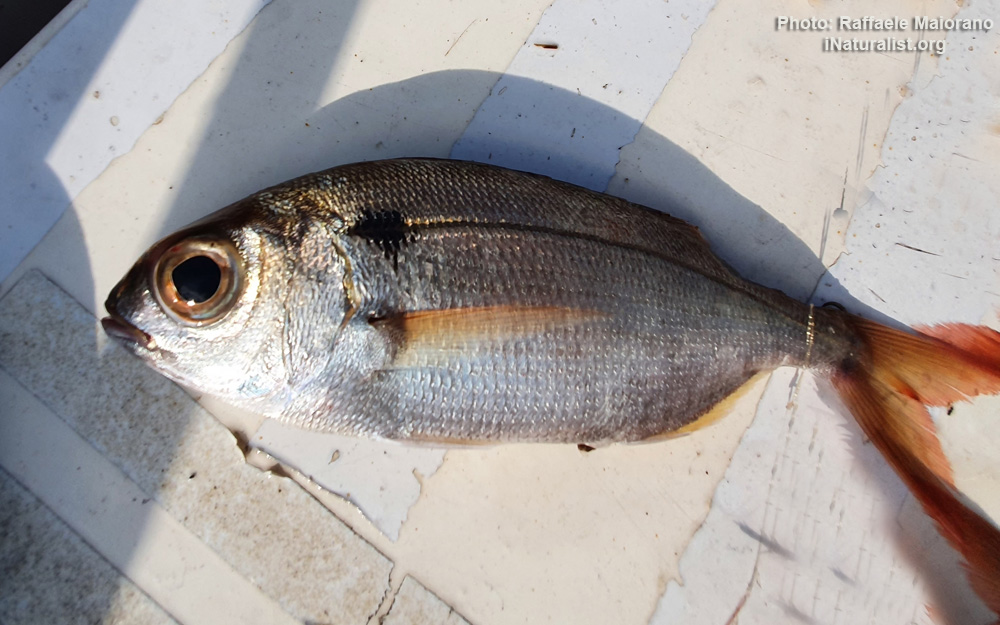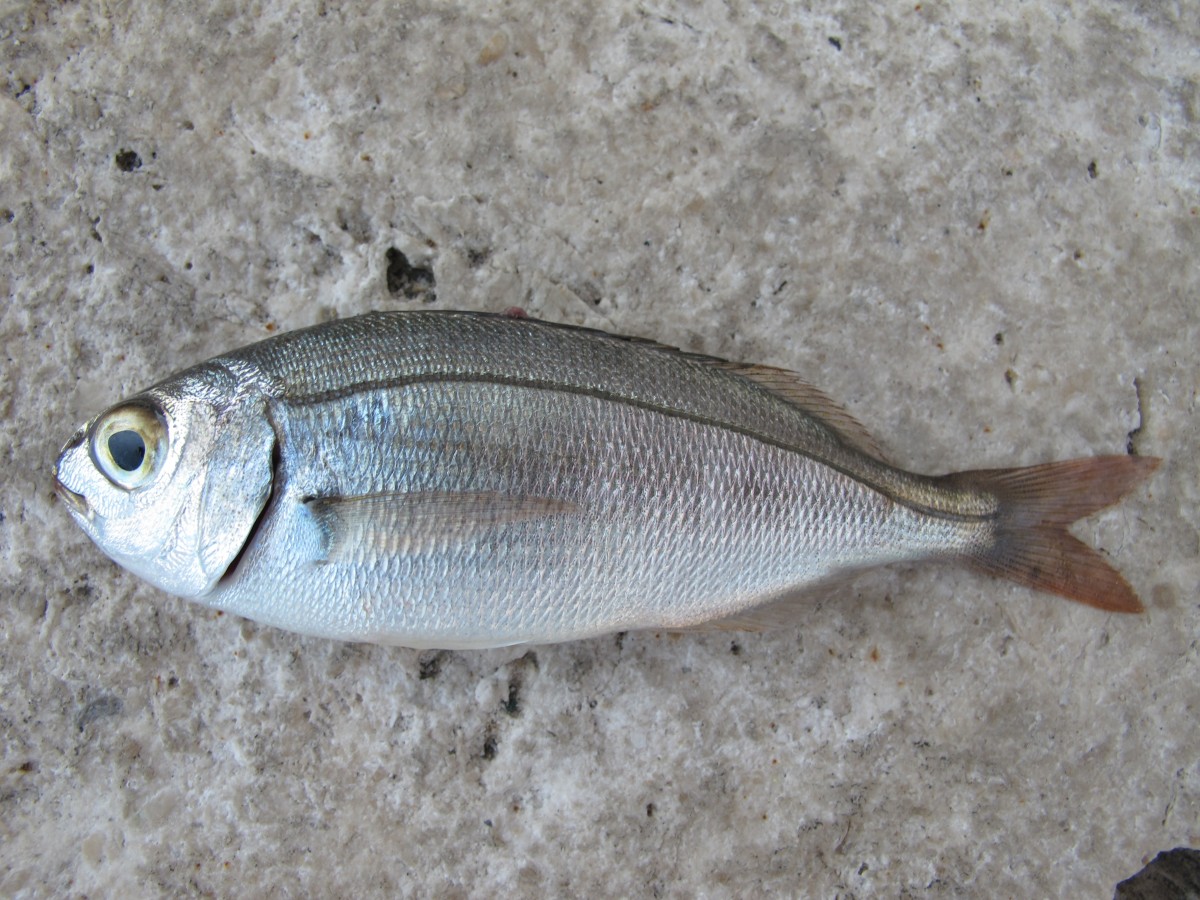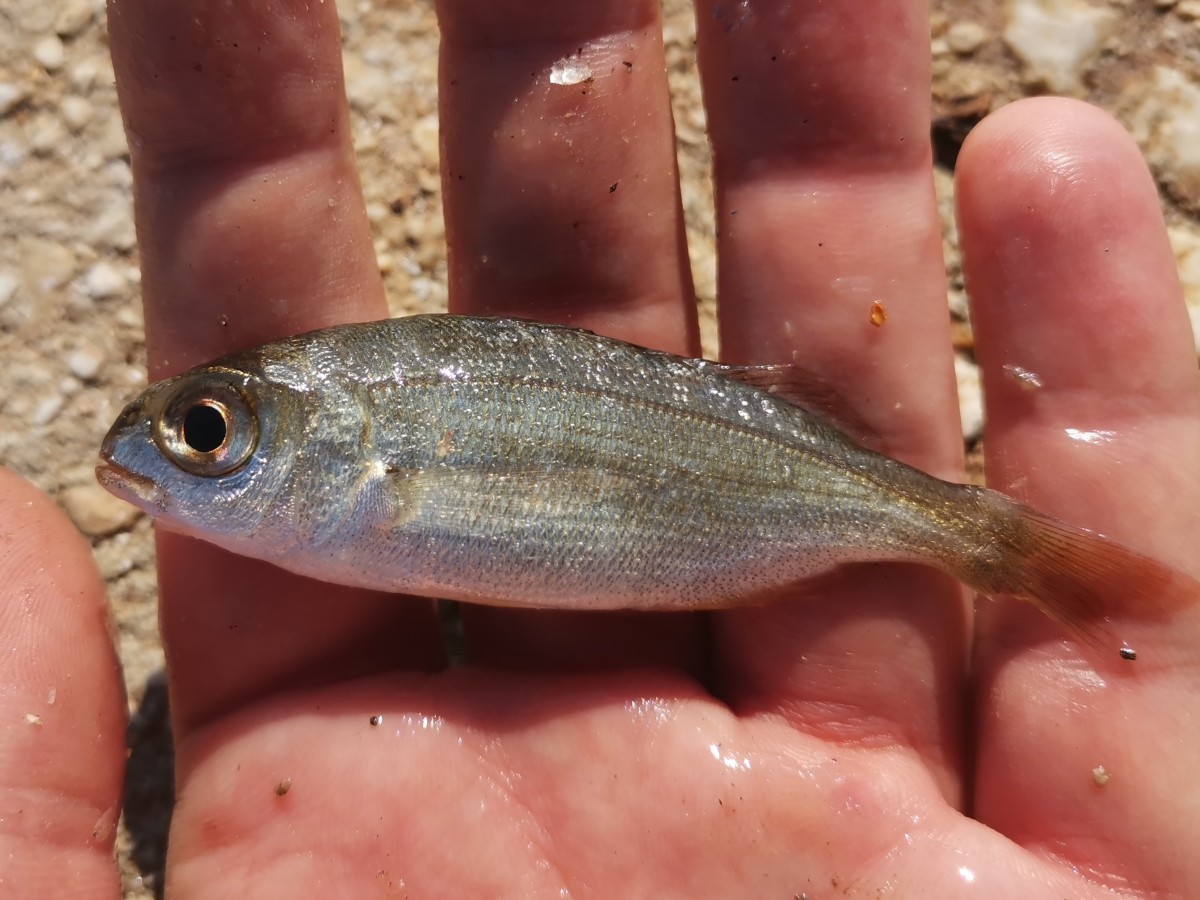Blackspot seabream
(Pagellus bogaraveo)

Classification
General data
The blackspot seabream (Pagellus bogaraveo), also known as the red seabream and as the besugo, is a marine ray-finned fish species in family Sparidae. It is widespread in the Eastern Atlantic from Norway to Mauritania, including Macaronesia and the western Mediterranean.
The blackspot seabream is a fish with a moderately deep body, a rounded snout and large eyes which have a diameter greater than the length of the snout. It has small sharp teeth and larger, flatter teeth set into the sides of the jaws. It has a long dorsal fin which has 12 spines in the anterior portion and 12–13 branched rays in the posterior portion. The shorter anal fin has three spines and 12–13 branched rays. The pectoral fins are relatively long and are pointed at their tips. The back and upper flanks are reddish in colour and the lower part of the body is silvery with a pinkish tinge. There is a black spot situated directly above the base of the pectoral fin.
The maximum recorded standard length is 70 centimetres (28 in) but a more common standard length is 30 centimetres (12 in). The largest published weight is 4 kilograms (8.8 lb).
The blackspot seabream is largely found in the waters of the eastern North Atlantic from Norway south to Cape Blanc in Mauritania, its range extends into the western Mediterranean as far as the Strait of Sicily and the Adriatic. It is also found around the Canary Islands and the Azores and has been recorded off Iceland.













